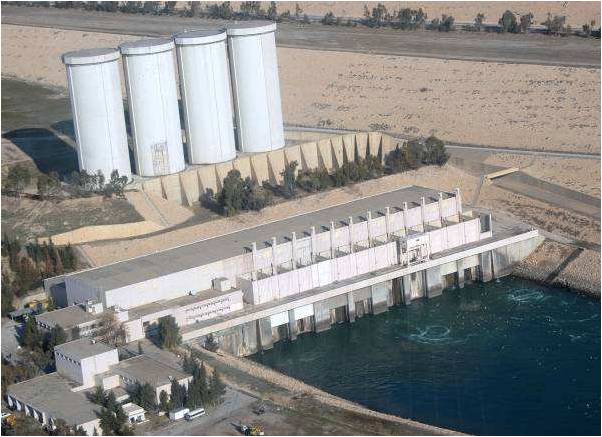There is extreme danger of a dam breaking in Iraq above two of its largest cities, Mosul and Baghdad, that may kill many thousands of Iraqis. President Obama is extremely worried about this because of the effect a break would have on his foreign policy legacy, leading to his engagement in secret negotiations with the Iraqis to try to get them to do something about the problem.
If the dam doesn’t break before the U.S. election, the issue is likely to have little impact on the course of the campaign. However, the time when the dam is in most danger is from April to June, when it receives a heightened impact of water from melting snows, so if it goes, it may be within the next couple of months.
If and when the dam breaks, whether before or after the election, it’s going to have an enormous adverse effect upon our foreign policy, but if it occurs before the election it’s also going to have a tremendous impact on the course of the campaign.
Why will it have such an adverse effect upon our foreign policy? Perhaps it will permanently destroy the vision of America as a well-meaning, humanitarian nation. It’s true that natural disasters, even as large as this one, could have occurred before in other countries without them necessarily being attributed to the United States, other than perhaps to complain about receiving ill-placed or insufficient aid from the U.S. after the fact. But this one is different.
Not only is there a long and well-advertised history of U.S. involvement in Iraq — militarily, financially and politically — which certainly gave the United States ample time and power to solve this problem, but the United States obviously caused the problem in the first place with its invasion and blockade of Iraq in 1991.
It is true of course that the original cause of the difficulty was not the United States but Saddam Hussein building the dam on a water soluble limestone and gypsum base, which is now slowly being undermined by water seepage from above. But upon recognizing the problem, Hussein had already taken concrete steps, starting in 1988, to solve it. Those steps were well underway in 1991 when they were forcibly stopped by the United States’ embargo. The embargo denied the Iraqis the money and resources to complete those steps, so Hussein simply abandoned the project.
What were those steps that the Iraqi government was engaged in during the early 1990s? Experts had recommended building another dam, the Badush Dam, on nonsoluble ground downstream from the damaged Mosul Dam, but still upstream from Baghdad and Mosul,to catch the waters of the Mosul Dam when and if it were to break.
Saddam had decided to build the new dam and by 1991 it was already 40 percent complete. It is true that it was running into some technical problems, but there is no reason to believe these wouldn’t eventually have been overcome as Hussein obviously wanted to fix the problem.
What was the excuse for the invasion? The fact that Iraq had invaded Kuwait, even though Iraq had received mixed signals beforehand that the U.S. wouldn’t object. The U.S. went to war for some ideological purpose and perhaps for fear that if we didn’t stop Hussein here, we’d have to stop him on the beaches of North Carolina and Florida.
Kuwaiti freedom may have looked like a noble cause to George H. W. Bush, but to the rest of the world it’s going to look like delayed genocide, when and if that dam breaks before completion of a second one. So if the rest of the world happens to think that “Kuwaiti Freedom” was a deliberate ploy by the United States to get the Iraqis to stop building their new dam so that millions of them could be wiped out in a later disaster, who is to blame them?
Jonathan Miller is a graduate student studying geology. He can be reached at jsmiller@umd.edu.



